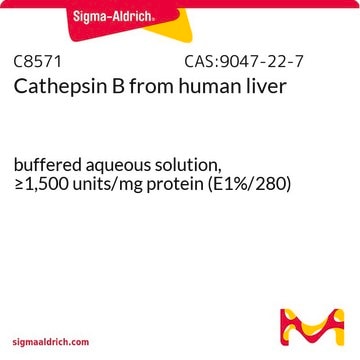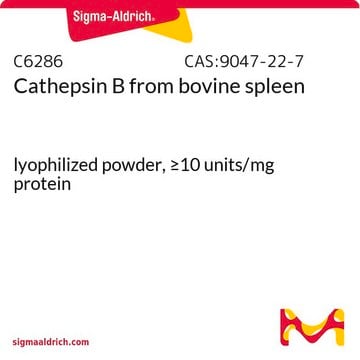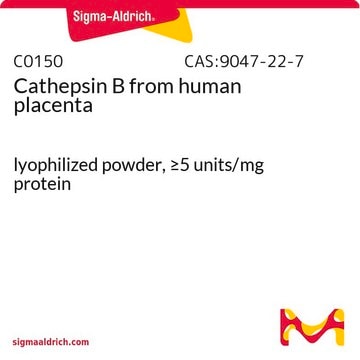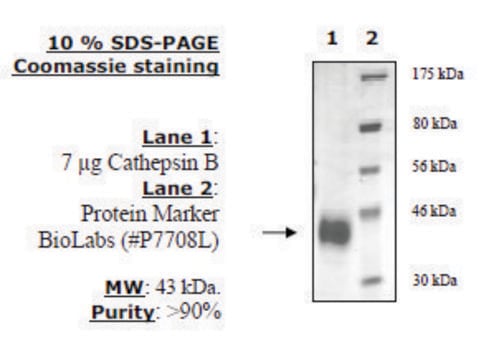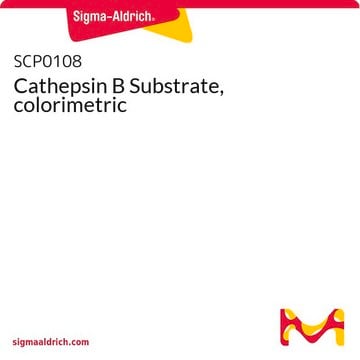219364
Cathepsin B, Human Liver
Cathepsin B, Human Liver, CAS 9047-22-7, is a purified native cathepsin B from human liver, purified by affinity chromatography. Upregulated in many types of tumors.
Synonym(s):
Cathepsin B, Human Liver
About This Item
Recommended Products
biological source
human liver
Quality Level
Assay
>95% (SDS-PAGE)
form
liquid
specific activity
≥50 units/mg protein
purified by
affinity chromatography
manufacturer/tradename
Calbiochem®
storage condition
OK to freeze
avoid repeated freeze/thaw cycles
technique(s)
activity assay: suitable
pH range
3.5—6.0
suitability
suitable for molecular biology
application(s)
life science and biopharma
shipped in
wet ice
storage temp.
−70°C
Gene Information
human ... CTSB(1508)
General description
Cathepsin B, Human Liver, is a native cathepsin B from human liver, purified by affinity chromatography. Cathepsin B is a lysosomal protease with endo/exopeptidase and a carboxydipeptidase activity. It is also known as cysteine cathepsin and belongs to the C1 family of papain-like enzymes. Cathepsin B like H, L, C, X, F, O and V is ubiquitously expressed in human tissues.
Optimal pH: 3.5-6.0.
Application
Biochem/physiol Actions
Packaging
Warning
Unit Definition
Physical form
Preparation Note
Reconstitution
Other Notes
Berquim, I.M., and Sloane, B.F. 1996. Adv. Exp. Med. Biol.389, 281.
Keppler, D., et al. 1994. Biochim. Biophys. Acta.1226, 117.
Musil, D., et al. 1991. EMBO J.10, 2321.
Sloane B.F. 1990. Semin. Cancer Biol.1, 137.
Legal Information
Storage Class Code
12 - Non Combustible Liquids
WGK
WGK 2
Flash Point(F)
Not applicable
Flash Point(C)
Not applicable
Certificates of Analysis (COA)
Search for Certificates of Analysis (COA) by entering the products Lot/Batch Number. Lot and Batch Numbers can be found on a product’s label following the words ‘Lot’ or ‘Batch’.
Already Own This Product?
Find documentation for the products that you have recently purchased in the Document Library.
Our team of scientists has experience in all areas of research including Life Science, Material Science, Chemical Synthesis, Chromatography, Analytical and many others.
Contact Technical Service